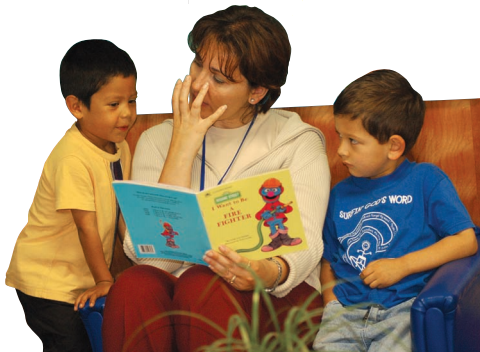47 8.4: Dual Language Learners
Dual language learner (DLL) means a child who is acquiring two or more languages at the same time, or a child who is learning a second language while continuing to develop their first language. The term “dual language learner” may encompass or overlap substantially with other terms frequently used, such as bilingual or multilingual, English language learner (ELL), Limited English Proficient (LEP), English learner, and children who speak a Language Other Than English (LOTE). To be as inclusive as possible, in this book we have chosen to use dual language learner and multilingual in most contexts.
Language is essential in developing a strong sense of culture and overall learning. It has been noted that children who are dual language learners (DLL) form a substantial and growing segment of the preschool population in California. Sixty percent of all children under five are English learners. [107] For the majority of these children, Spanish is the home language, followed by Vietnamese, Cantonese, Hmong, Tagalog, Korean, and other languages.” [108]
Over 200 languages are known to be spoken and read in California, with Spanish used as the state’s “alternative” language. California has more than 100 indigenous languages, making California one of the most linguistically diverse areas in the world. All of California’s indigenous languages are endangered, although there are now efforts toward language revitalization. [109]

Children who are dual language learners bring a wealth of ability and knowledge as well as varied cultural backgrounds to early childhood settings; they also require curricular adaptations to make the most of their abilities while they progress toward full English proficiency. Current knowledge, based on successful practices and sound research, strongly suggests that specific teaching strategies, individualized interaction approaches, and enhanced environments are critical to the long-term success of young children who are not native speakers of English. [111]
What Programs Can Do
The California Department of Education has developed the following guiding principles to assist practitioners in their work with children who are dual language learners:
- Families matter: T he education of children who are dual language learners is enhanced when preschool programs and families form meaningful relationships. It is through these relationships that teachers will not only learn about home language use but the hopes and aspirations that parents have for their children’s overall development.
- Recognize existing language and literacy strengths in the home language: Engaging in multiple literacy practices, such as reading books, singing songs, and reciting poetry, is part of the daily life of many families. It is important to recognize that dual language learners have a variety of literacy experiences in their home language that range from an emphasis on oral language development to literacy activities involving print.
- Respect cultural values and behaviors reflected in the child’s language and communication: Language and culture are highly integrated, so attention must be paid to cultural values and behaviors, which are embedded in both the language and communication style of the home language and the new language being learned.
Benefits of Maintaining Children’s Home Languages
“All children benefit from the social and cognitive advantages of multilingualism and multiliteracy.” [112] Specific benefits include:
- Individuals who are multilingual switch between different language systems. Their brains are very active and flexible (Zelasko and Antunez, 2000).
- Multilingual people have an easier time understanding math concepts, developing strong thinking skills, using logic, focusing, remember, and making decisions, thinking about language, learning about languages
- Maintaining home languages supports children’s maintenance of strong ties with their entire family, culture, and community.
- Multilingual children are also able to make new friends and create strong relationships in their second language—an important personal skill in our increasingly diverse society
- Children raised in multilingual households show better self-control (Kovács and Mehler, 2009), which is a key indicator of school success.
- People who use more than one language appear better at ignoring irrelevant information
- Thinking in a second language frees people from biases and limited thinking
- What is learned in a home language creates strong foundations that can be transferred when learning additional languages.
- Multilingual adults have more job opportunities around the world than monolingual adults and earn an average of $7,000 more per year than their monolingual peers.
- Those that are multilingual can participate in the global community in more ways, gain information from more sources, and learn more about people from other cultures.
Multilingualism is an asset to individuals, families, and our entire society. Early childhood educators can share the benefits of bilingualism with families, find ways to support children’s home languages, and encourage families to keep their language strong. It is important to “make sure families of emergent bilinguals understand the academic benefits and the significance of supporting their child’s home language as English is introduced through the early childhood program, to ensure their children develop into fully bilingual and biliterate adults.” [113]

